#Modern Innovations
Explore tagged Tumblr posts
Text
Top 10 Revolutionary Technologies That Transformed Daily Life
Technology has always been the cornerstone of human progress, shaping how we live, work, and interact. From life-altering communication tools to sustainable transportation solutions, revolutionary technologies have redefined daily life. This blog explores the top 10 revolutionary technologies, their development journeys, and how they’ve impacted modern society. 1. The Smartphone: Redefining…
#3D Printing#AI Advancements#Artificial Intelligence#blockchain technology#Cloud Computing#Digital Transformation#Electric Cars#Future Technology#Internet Development#Modern Innovations#Renewable Energy Solutions#Revolutionary Technologies#Smartphone Evolution#solar energy#Streaming Platforms#Sustainable Living#Tech Revolution#Technology Impact#Wearable Technology
0 notes
Text
Innovations Driving Modern Healthcare Standards

In the dynamic landscape of healthcare, standards advancements stand as the cornerstone of progress, continually shaping the quality of care provided to patients worldwide. As technology evolves at an unprecedented pace, modern innovations have become the driving force behind these advancements, revolutionizing the way healthcare is delivered and setting new benchmarks for excellence.
One of the most significant impacts of modern innovations is evident in the realm of quality care enhancements. With the advent of cutting-edge medical technologies and digital solutions, healthcare providers can now offer more precise diagnoses, personalized treatment plans, and proactive preventive measures. From AI-powered diagnostics to remote patient monitoring devices, these innovations not only improve patient outcomes but also streamline workflows, reduce errors, and enhance overall efficiency.

Moreover, the integration of technology has led to the emergence of tech-driven standards that prioritize interoperability, data security, and patient privacy. Electronic Health Records (EHRs), telemedicine platforms, and health information exchanges are just a few examples of how technology is reshaping traditional healthcare practices. By standardizing processes and facilitating seamless communication between healthcare professionals, these advancements ensure that patients receive timely, coordinated care regardless of their location or medical history.
At the heart of these transformative changes lies a commitment to healthcare excellence. As healthcare organizations embrace innovation and adopt best practices, they not only meet existing standards but also set new benchmarks for quality and safety. Whether it's through accreditation programs, clinical guidelines, or performance metrics, the pursuit of excellence drives continuous improvement across the entire healthcare ecosystem.
In conclusion, the journey towards modern healthcare standards is propelled by a relentless pursuit of innovation and excellence. Through standards advancements, modern innovations, quality care enhancements, tech-driven standards, and a steadfast commitment to healthcare excellence, we can ensure that patients receive the highest level of care possible, now and in the future.
#Standards Advancements#Modern Innovations#Quality Care Enhancements#Tech-Driven Standards#Healthcare Excellence
0 notes
Text



















We Rural Country House by Archisbang redefines the essence of rural architecture. Situated within the historic Palazzo Valgorrera in Piedmont, this project transforms a portion of a traditional farmhouse into a modern sanctuary.
Floating wooden structures, wrapped in a translucent polycarbonate skin, merge past and present, creating a space that feels both grounded and ethereal. Exposed brickwork and weathered tiles preserve the charm of the original architecture, while sculptural iron staircases lead to serene guest rooms above.
A design that honors history while embracing innovation—an invitation to live, gather, and connect.
Photography by Aldo Amoretti.
#italian interiors#italian architecture#architecture#italy#italian houses#houses#country houses#archisbang#aldo amoretti#modern design#rural architecture#Farmhouse Aesthetic#Historic Restoration#Interior Design#Architectural Innovation#Piedmont Italy#Contemporary Design#Minimalism#Design Inspiration#Sustainable Architecture#Architectural Photography#Timeless Design
26 notes
·
View notes
Text

Justine Johnstone
By Ira L. Hill (ca.1920s)silent screen beauty
became
#justine johnstone#by ira l. hill#ca.1920s#silent screen beauty#retired from the screen in 1926#became a noted pathologist#innovator in the treatment for syphilis#was part of the team that developed the modern intrevenous drip#cropped photo#sepia photography
10 notes
·
View notes
Text
reading about Salafi history is so interesting
what do you mean you were kinda cool (not fully, but definitely some based ideas) but then one dude got a little too into wahabism and so created a whole knew version of salafism which went against original salafism what
what do you mean you were originally a political movement against western imperialism and the authoritarian-esque hiearchies within sufism and spent most of your time preaching for rational discussions and scientific innovation but that was stopped cause OF ONE FRICKING DUDE
idk it's just so funny that the salafi movement's entire point was "lets do stuff from the past" which is textbook conservative but then the stuff in the past was "science is amazing and i love reframing my worldview with every new discovery" which is textbook progressive.
(I do think they're wrong btw, i just think they had a few good ideas sprinkled amongst the weird stuff)
#to clarify#i don't agree with a lot of the salafi beliefs (even from the original political movement)#a big example being i believe god is omnipresent#and i think spirituality should be a massive driver within faith and religion#but i can't completely disagree with their desire to overthrow power structures or make science compatible with religion#this is of course not talking about modern day salafism#which is influenced by wahabism#plus i think the stuff they consider “religious innovation” or bidah is bs cause lets be real i'd much rather trust a practice from#100 years after Islam originated to represent Islam better than i will a practice suddenly discovered in the 1860s#islam#muslim#muslims#islampost#islamdaily#islamic#islamicpost#islamblr#muslimblr
15 notes
·
View notes
Photo

I am by far your superior, but my notorious modesty prevents me from saying so.
- Erik Satie
To his contemporaries and peers Erik Satie was something of an enigma. Just a few of his quirks included claiming he only ate white foods, carrying a hammer wherever he went, founding his own religion, eating 150 oysters in one sitting, and writing a piece with the instruction to repeat 840 times! As a composer, Satie paved the way for the avant-garde in music and became a very influential figure in the classical music of the 20th century whose works still sound fresh today.
Born into a poor and difficult childhood in the Normandy harbour town of Honfleur on 17 May 1866, Satie would always be an outsider. The Paris Conservatoire to which he was enrolled by his stepmother, herself a pianist, became for him “a sort of local penitentiary” during his teens; he left with no qualifications and a reputation for being lazy. He signed up for military service in 1886 and dropped out within the same year. Immersing himself in the bohemian life of Montmartre, he became linked with the popular music scene and eked out a living as an accompanist, playing at the Chat Noir cabaret. Always on the periphery, and forever out of money, he later downgraded from the cramped room in which he lived to the less fashionable Parisian suburb of Arcueil, where he holed up in isolation and squalor – no visitors set foot in the room during the near-30 years he lived there.

Much has been made of the eccentricities of this flâneur, who was always seen in a grey velvet suit, and yet underlying Satie’s music is his serious desire to create something new. You can hear it in his popular piano pieces: the haunting scales and rhythms of the Trois Gnossiennes written under the spell of Romanian folk music, and the meditative world of Gymnopédies, where, as in a cubist painting, motifs are “seen” from all sides. At a time when French composers were looking to escape the shadows of Wagner’s epic Romanticism, the French composer’s stripped-back mechanical sound, inspired by the humble barrel organ, offered a radically simple approach.
Satie preferred originality to the mundane. The composer of the famous Gymnopedies, could never be accused of having an uninteresting personality. For one, his outgoing fashion statements always caused a stir. During his Montmartre years, he had 12 identical velvet corduroy suits hanging in his wardrobe, which earned him the nickname ‘The Velvet Gentleman’, and in his socialist years, he donned a bowler hat and carried an umbrella.
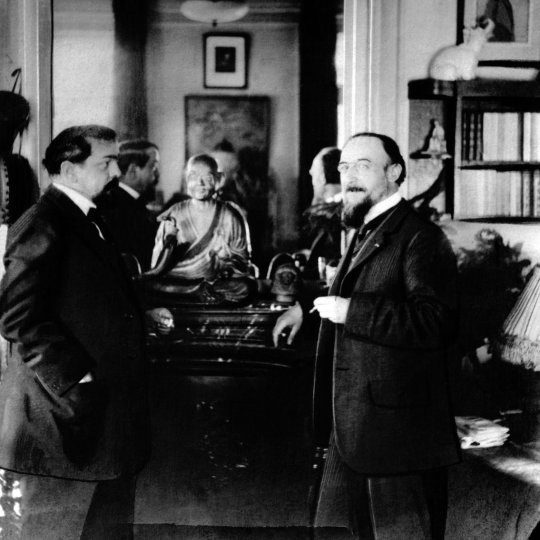
Debussy helped to draw public attention to Satie, orchestrating two of his Gymnopédies, yet Satie had to wait until much later in life to attain celebrity status. While still earning a living writing salon dances and popular cabaret songs, and after suffering a creative crisis, he enrolled himself at the Schola Cantorum in Paris at the age of 39. Rather than finding him validation, his studies seem to have fuelled his hatred of convention - it’s with more than a hint of bitterness that he claims to put “everything I know about Boredom” into the Bach chorale of his masterful Sports et Divertissements piano pieces. But notoriety led to a succès de scandale and when it came it came with a bang in Parade, his surreal, one-act circus ballet for Diaghilev. Into the orchestral score, which featured jazz and cabaret tunes, were thrown typewriters, sirens and a pistol - just the kind of noises a wartime audience would normally pay not to hear. With its rigid cubist costumes by Picasso - which restricted Massine’s choreography - and a promotional push from Cocteau, it was provocative enough to secure Satie’s position at the vanguard of modernism.
Yet Satie was continually frustrated in his attempts to be accepted as an artist in high society France - his failure to establish himself at the prestigious Académie des Beaux-Arts, to which Debussy had won a scholarship, only compounded his resentment. Was this treatment by the cultural elite fair? Certainly his determination to antagonise his audience in his late ballets did little to endear him to the critics, but the fierce criticism he received in Paris was also a sign of things to come. Pierre Boulez would later poke fun at Satie’s lack of craft, while composer Jean Barraqué - another proponent of 12-tone music - would deride Satie as “an accomplished musical illiterate … who found that his friendship with Debussy was an unhoped-for opportunity to loiter in the corridors of history”.
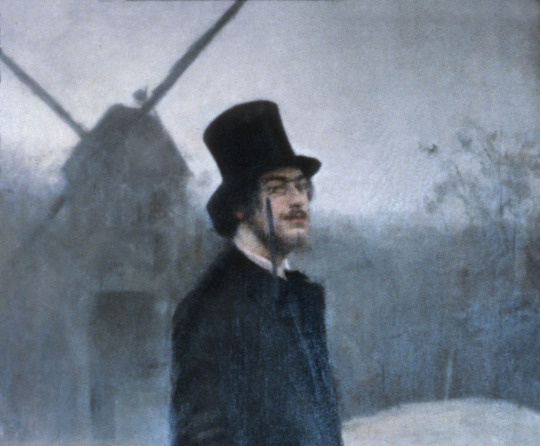
Satie is perhaps, to this day, the most audacious and original composer when it comes to naming his works e.g. Gnossiennes and Gymnopédies. With Satie you will not see symphonies, concertos or opus numbers. Satie possessed a wicked sense of humour and his mockery, both of himself and others, became an inspiration for many of his irony-tinged works. His Sonatine bureaucratique is a spoof of Muzio Clementi’s Sonatina Op. 36 and contained many witticisms in the score. For example, he writes Vivache (vache being French for cow) instead of the original Italian tempo marking Vivace.
Whether in the collage-like miniature piano parodies he wrote during the World War I, his creation of a theatre format that has endured over the years, or in his collaboration with Jean Cocteau, Pablo Picasso y Sergei Diaghilev, there is a liveliness of imagination and a hunger for innovation that made Erik Satie In the torch bearer of the vanguard in his work. Satie would influence so many so strongly that years later some of his closest friends became radical artists, for example. ManRay, the sculptor Constantin Brâncusi, and Marcel Duchamp, or a much younger group of Paris-based composers like Les Six.
Satie, a known drinker of absinthe, and apparently every other alcohol available, died of cirrhosis at the age of 59 in Arcueil, France in July 1925. But his compositions, especially those deceptively simple-sounding solo piano works, find life today through recitals, concerts, and great movie scores. Although he died in poverty with little success to his name, today Erik Satie is acknowledged as a founder of 20th-century modernism, who changed the face of music.
Personally I do find Satie's music enriching, But I also find that his calculated wackiness is culturally apt. Pieces like ‘3 Pieces in the Shape of a Pear’, ‘Flabby Preludes for a Dog’ and ‘Desiccated Embryos’ rewardingly deflate Wagnerism's excesses in a characteristically French way.
#satie#erik satie#quote#music#classical music#composer#pianist#debussy#modernism#paris#french#france#arts#culture#french culture#innovation#artist#life
180 notes
·
View notes
Text

The various textures and materials used make this kitchen visually interesting
#toya's tales#style#copper#glam metal#metallic#metal#stainless steel#concrete#marble floor#toyastales#toyas tales#home decor#interior design#architecture#kitchen inspiration#kitchen innovation#industrial kitchen#industrial#modern interior#modern industrial style#modern kitchen#november#fall#winter#autumn#kitchen ideas#kitchen interior design#kitchen island#kitchen design#kitchen decor
61 notes
·
View notes
Text
One thing I adore about PB is Tommy's approach towards modernity. Straddling the non-industrial past and the industrial/modern present; constantly positioning himself on the cutting edge, if not quite bleeding edge, of period/era technology. Cars, manufacturing, shipping, phones, typewriters. Medicine, psychology, and even bringing in incredibly modern concepts into politics in that era. He is constantly grabbing at the future. It's this striking characteristic in him, all the way from S1 when they install the phone in the Garrison - ~if only we knew someone else with a phone, we could call them~ - through to S6's final episode when he even wangles a seat on an airplane to get to Canada without wasting time. So uncommon at the time, but he just went: I need to get there with least time lost, and matched requirement to a borderline experimental non-consumer-available insider technology to do so.
(Sidestep: Such an interesting juxtaposition of all that, with the constant representation of the pre-industrial-era Romani threads in S6, too: Esme, the hills, the horse, the curse, the mythology, the vardo, all that slamming up against an actual cutting edge submachinegun, so ‘contemporary’ it’s actually anachronistic by a few years (if my research was right, it’s a WWII weapon that submachinegun, not to get on the symbolism, but). Arguably, Ruby in hospital having the most contemporary medical treatment available while Tommy goes walkabout to lift a curse is another notable juxtaposition.
There’s also an interesting slant of his modernity balanced against what I call his hoarding habit — the most cutting edge piece of tech or modernity in 1923 he’s still hanging onto in 1933. But yeah, even with that the juxtapositions are interesting because they can only happen if the forward reaching/modernity focus is there)
So, when I see contemporary-modern!AU takes of Tommy that are like, representing him as a relatively humdrum part of the capitalist consumer status quo, or even as a luddite who can't and won't use an Iphone, I scratch my head. I do think he’s *not* much of an innovator, but he is absolutely a considered first-gen adopter and recognises (and takes) opportunity regarding tech innovation with little concern for risk.
I have contemplated would rich modern!AU Tommy with disposable income finance startups if they pitched well: probably yes, because he takes gambles; with a personally vested interest in the innovators in the same way he had that vested interest in Bonnie. Startups as horses or boxers on a diff playing field, win some, lose some, etc.
#There’s also how modern Tommy is probably a weapons trafficker of some sort too#but can still scratching at how it all translates#Only bothers w illegal drugs because breaking into the international pharmacology cartel is too hard#The thing that really changes in contemporary era is the ease of global reach. Tommy was an innovator in the 20/30s because he looked globa#As soon as he could#from his class-bound ethnically diverse neighbourhood. Internationality was always there but it was a difference#Compared to now global reach is more the norm not the innovation#Anyway modern AU Tommy is interesting because representing that ‘future reach’ he shows in the 1920s rarely seems to be explored…#Another part of this thinking is me wondering *why* I keep seeing in-my-head-contemporary!Tommy in Japan on business trips#think it’s something to do with the same interesting juxtaposition of the pre industrial traditionality with bleeding-edge in Japan
17 notes
·
View notes
Text
I have a big google doc thing where I keep track of media and stuff (putting everything in loosely ranked categories), which is mostly just for my own reference so I know what tv shows I've already seen before, etc. and I never really look back through it, typically just a quick "okay, watched two movie in the past 8 months, need to quickly slap them somewhere in the lists. okay. done. save document. exit". But today I was actually reading through some of the old notes and there are like... MULTIPLE places where my comment is basically "It would have been good if it were about elves" or "I wish there was a fantasy show made in this same style" or "It's well made, but I just keep thinking about how I would like it more if everyone was an elf or was in old 1700s costumes" or etc like...... lol.... Most biased media ranking system on earth blatantly made by someone with an extremely hyperspecific range of narrow interests. It'd be like if a food reviewer only had 5 foods they actually liked, so they'd just go to a pizza place and be like "eh, the pizza was okay, but I just think it would be better if it was cereal instead. :/ ...2 out of 10"
#Which.. I mean... I am allowed to be biased because literally it's just for my own personal reference (or occasionall#y to send to friends or something if we're discussing the topic) so like.. nowhere am I saying 'I am the god of perfect taste and these#rankings are objectively the absolute truth and everyone should have my same opinion' or anything#BUT still.. it's funny to me sometimes#'Succession would be 100x better if it had the same cast/character quirks and shaky camera style and#acting choices/weird dialogue and general concept etc. EXCEPT it takes place within an elven noble family or something#managing the family business and everyone is in fantasy costumes now'' like.....okay...... but it's NOT that way..soo... thats not the show#''I like the acting style/general tone of Fleabag but i don't care for any of the characters or any of the subject matter and I wish it was#set in the 1800s and had vampires and was about magic instead'' okay..... again... you are making up an entirely new show in that case lol#OR my other beloved typical complaint ''The concept is good but theres too much plot and action and not enough people just sitting#around doing nothing and exposition dumping world and character lore'' ''this needs more goofy sideplots and filler episodes''#''this Drama was too dramatic I think it should be more lighthearted & people need to sit around doing nothing just being weird more often'#''the Action Movie was ok except for the action scenes - which I skipped through all of- but I liked the costumes and worldbuilding'' etc.#ERM sorry your plot has too much plot. also elves have to be included somehow. bye#BUT SERIOUSLY!!!!!! I literally genuinely believe that any show I like (or even dislike) could ALWAYS be improved greatly by#putting people in fantasy or historical costume/setting/etc... why the FUNK would I want to see bland jeans and cars and cell phones#when I could see elaborate velvet cloaks and fantastical landscapes and interior design and innovative takes on historical or#magical technology or etc. etc. etc. I LIVE in the modern day. I see it all the time!!! BORING! stinky!! boo!!!#ANYWAY... another social divide for me.. People love to bond by discussing media. which is hard when I'm like#'I literally will not watch something at all unless it fits into one of these 10 extremely specific categories which are all i care about i#the entire world''.. I say this and yet I still dislike most fantasy or historical things I've watched lol. ok TWO main criteria then!!#it must 1. be in a different world or time period. 2. be goofy silly. Nothing ever has BOTH. It's always overly serious boring drama action#fantasy/history stuff OR it's comedic lighthearted but with modern day characters... WHY.. anguish and woe and so on..#ANYWAY jhjnk... at least I can make that divide. Some people seem to project their own personal preferences and get really emotionally#defensive if you say you didn't like something - as if the fact that they DO like it is some Objective Truth or something rather than just#opinion/preference based. I can still easily say ''this is well made/well written/acted/good in a technical sense/has a lot of#points of appeal that most people would be drawn to/etc'' and admit that it's a GOOD show probably. I just PERSONALLY think its#bad because my tastes are very narrow. Some things ARE actually made badly but. things are not bad INHERENTLY just bc they dont suit ME lol#Better to recognize/accept whats odd about you and be peacefully aware of it than just being mad at everyone all the time for not fully#agreeing with you even when you're the one with the Weird opinion in that case lol.. I am right though :3 but.. lol... still. i get it
25 notes
·
View notes
Text
i'm not a particular jee fan but as a fan of atla old men i am Adjacent and y'all. i'm so sorry for what they did to your man in natla. first off de-aging him removes the dynamic of zuko being an asshole teen failing to command grown adults (unlike azula who does have the respect & fear of adults) and second making him & the crew members of the 41st makes it seem like his problems with zuko are totally unjustified bc he owes his life to zuko while originally the point is that zuko has this capacity to care about people but is trying to stifle it and embody this cruel tough leader role that doesn't actually fit him. and what is the point of zuko if he is not struggling & failing to live up to his shitty father's idea of leadership and masculinity
#in retrospect i think ascribing meaning to most decisions in natla is dumb bc the goal was simply to chop up and serve atla back to us#like those '50s dinners with jello#what does it add to the chicken and peas to put it in gelatin except Ooh Novelty#it wasn't culinary innovation it was just Let's Serve This A Slightly Different Way and market it as modern#like they fucked this up not because they actively misunderstood the show#but bc we gotta change it so uhh...jee was part of the 41st! we took two aspects of the episode and mashed them together!#we made something new!#you made chicken jello is what you did#ANYWAYS. i got back from grocery shopping and put on the next episode can you tell#natla blogging#atla liveblogging
16 notes
·
View notes
Text
#6: The Lady in the Lake (1946)

I’ll be honest, the best part of this movie is Audrey Totter. There’s a reason she was one of the queens of B movies in the 1940s—she’s just incredible. She’s cold and calculating and absolutely gorgeous.
A lot of things about this movie are a little hard to judge because the cinematography is frankly just that distracting. Robert Montgomery invented first-person POV camera work for this movie and it’s a very impressive accomplishment. It also just takes over the whole thing.
The plot kind of follows the book, though it simplified the actual lake plot, which is kind of hilarious, and all of the romance between Marlowe and Adrienne Fromsett is completely made up.
Montgomery is a so-so Marlowe, he’s not the worst one to do it but he’s far from the best either. Again, I think a big part of that is that the cinematography keeps him so disconnected from the audience that you just don’t get to know him well and then his doing double-duty as the director kept him busy. The star of the film is really Totter, which is probably just as well.
Overall movie score: 3.5/5, mostly for Audrey Totter and the innovation in cinematography
Marlowe score: 3/5, Montgomery isn't bad, he just doesn't quite feel present; ironically his focus on the first-person POV made me feel detached from him as a character
Perry Mason score: 3/5, it's only Audrey Totter but she's just so incredible that she's worth 3 points all by herself
For a reminder of why I started this series and how I’m rating these movies, you can check out my master Marlowe post. I’ll be posting my reviews/rankings of the remaining Marlowe movies using the tag #Marlowe movies so if you’re interested, follow along!
#marlowe movies#philip marlowe#the lady in the lake#robert montgomery#audrey totter#this really isn't a bad movie#and i would recommend watching it#the camera work may be a bit distracting but it's also incredibly well done#and wild to think about how innovative it was at the time#i think modern audiences take so much for granted these days#we forget that movies were still relatively young in the 1940s#so much of what directors did was made up on the spot#montgomery really was a revolutionary in this film
10 notes
·
View notes
Text
I shortened treacherous to "tretch" the other night. As in: "Although icy, the back sidewalk is not as treacherous as the front walk, just a little tretch."
Great word, will use again, but I never realized how easy it is to miss the mark on Bertie Wooster and end up as a 90s valley girl
#clueless style modern day adaptation?#maybe modern day adaptations should always star valley girls#onion’s nighttime thoughts#in these tretchy times we need innovators on the front lines making new bad slang#���
3 notes
·
View notes
Text
Can’t believe that in the time since commissioning those sprites I have started and subsequently distanced myself from a sea slug copycat craze. Gargex is the ORIGINAL seaslugboy.
#sunne speaks#and i will be clear it was a copycat thing. Like obviously I’m not MAD about it. The distancing happened for OTHER reasons.#And idgaf if people make sea slug trolls I don’t own the concept of an animal#But I did innovate the idea of sea slug trolls#In the modern era at least
5 notes
·
View notes
Text


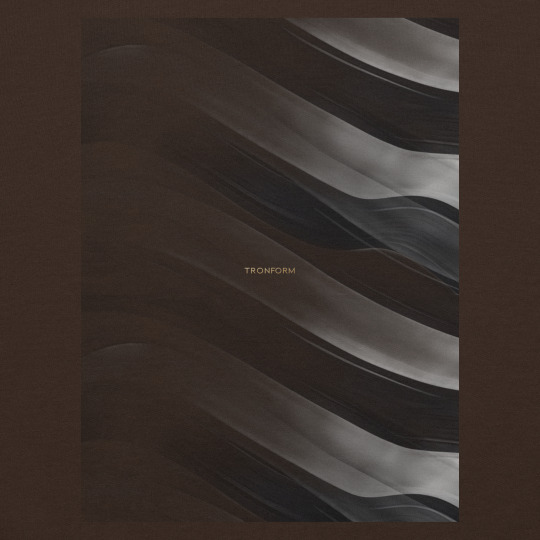


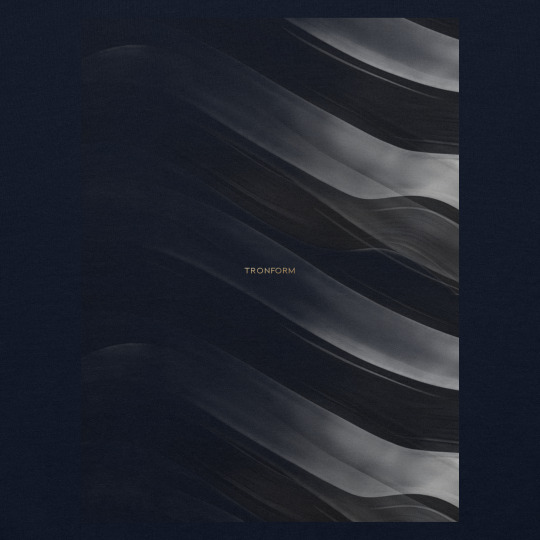






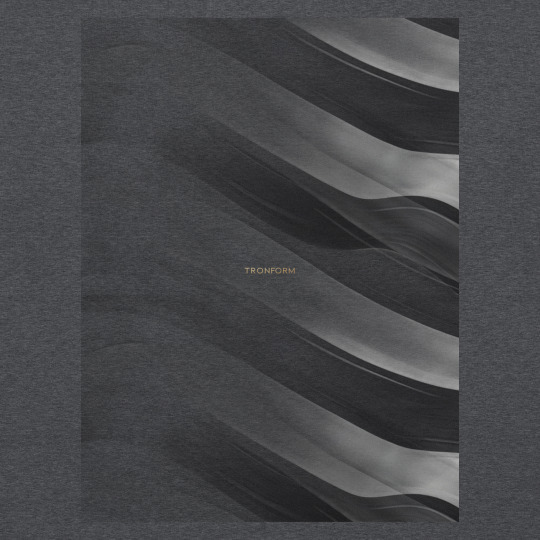



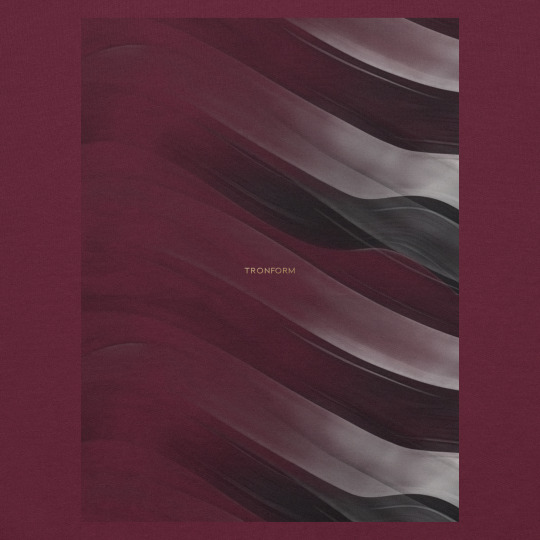




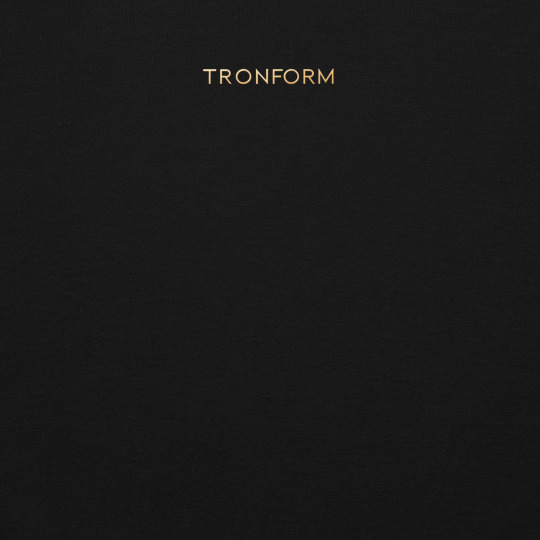
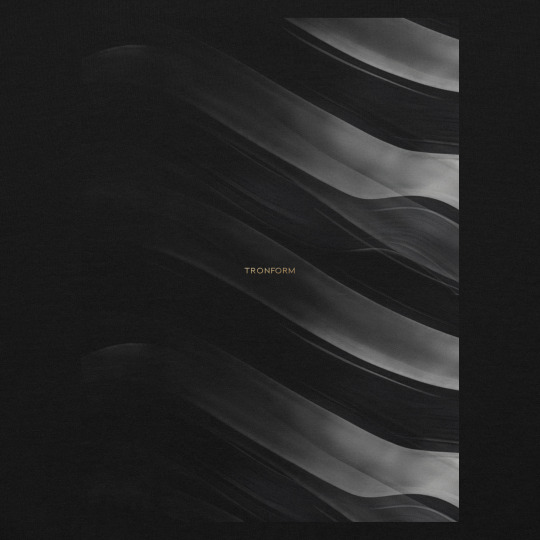

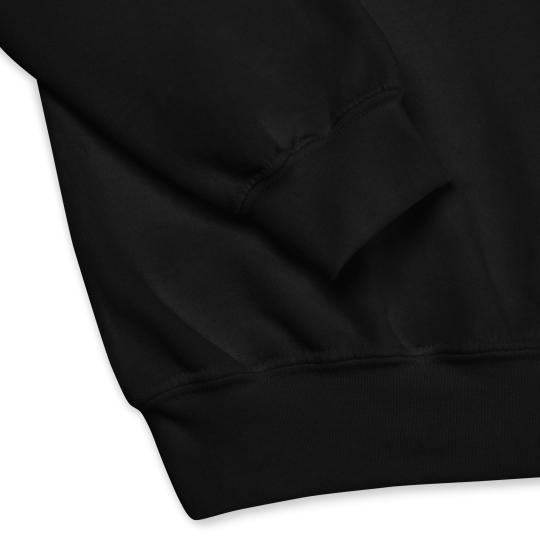
Improved New and Next Gen: NEW TRONFORM Redefined with new Designs. At TRONFORM, we create apparel that defines elegance and boldness. Introducing the Men´s Fading Wave Unique Refined Edition Sweatshir – First Edition, a true icon in modern menswear. Step into luxury with a hoodie that merges geometric precision with artistic finesse. The striking diamond-striped design is more than a pattern—it’s a statement of individuality and refined taste. Made from premium materials, this hoodie offers unmatched comfort and a stylish edge for any occasion. Carefully crafted for trendsetters, this piece reflects TRONFORM’s dedication to exceptional quality and innovative design. Celebrate bold fashion and elevate your wardrobe with TRONFORM today! Shop now: https://www.tronform.co/products/men-s-fading-wave-unique-first-edition-sweatshirt #TRONFORM #LuxuryRedefined #DiamondStripes #MenswearEssentials #BoldFashion #StatementStyle #TimelessElegance #PremiumQuality #StreetwearGoals #ModernMenswear #ExclusiveEdition #ChicComfort #UrbanStyle #ElegantCasuals #WeekendReady #HighFashion #FallEssentials #WinterStyle #SophisticatedLooks #GeometricDesign #LuxurySweatshirt #RefinedFashion #MensStyleInspo #CityChic #TrendyLooks #RedefinedSweatshirt
#Improved New and Next Gen: NEW TRONFORM Redefined with new Designs.#At TRONFORM#we create apparel that defines elegance and boldness. Introducing the Men´s Fading Wave Unique Refined Edition Sweatshir – First Edition#a true icon in modern menswear.#Step into luxury with a hoodie that merges geometric precision with artistic finesse. The striking diamond-striped design is more than a pa#this hoodie offers unmatched comfort and a stylish edge for any occasion.#Carefully crafted for trendsetters#this piece reflects TRONFORM’s dedication to exceptional quality and innovative design.#Celebrate bold fashion and elevate your wardrobe with TRONFORM today!#Shop now: https://www.tronform.co/products/men-s-fading-wave-unique-first-edition-sweatshirt#TRONFORM#LuxuryRedefined#DiamondStripes#MenswearEssentials#BoldFashion#StatementStyle#TimelessElegance#PremiumQuality#StreetwearGoals#ModernMenswear#ExclusiveEdition#ChicComfort#UrbanStyle#ElegantCasuals#WeekendReady#HighFashion#FallEssentials#WinterStyle#SophisticatedLooks#GeometricDesign
3 notes
·
View notes
Text
People were bitching about the introduction of the LED boards earlier this year but they look great especially for the gala
#sometimes y’all gotta relax and stop pretending to be 80 year olds who hate modern innovation#figure skating#gpf 2024
6 notes
·
View notes